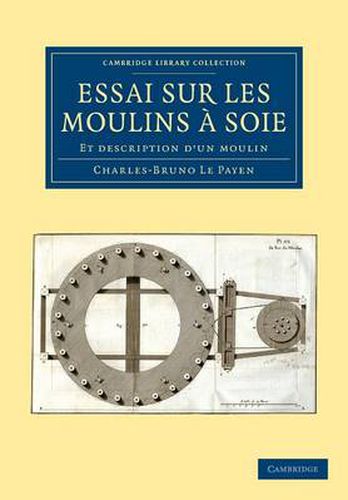Readings Newsletter
Become a Readings Member to make your shopping experience even easier.
Sign in or sign up for free!
You’re not far away from qualifying for FREE standard shipping within Australia
You’ve qualified for FREE standard shipping within Australia
The cart is loading…






From the fifteenth century, the silk industry developed in France to rival that of Italy. Taking off during the reign of Henri IV, sericulture was historically centred on Tours and Lyon. In the eighteenth century, attempts were made to introduce it to the north-east of France, to compensate for the decline of viticulture, which had until then represented the region’s main economic activity. Agronomist and director of the Royal Academy of Metz, Charles-Bruno Le Payen (1715-82) was the first to breed silkworms on local mulberry leaves in 1754. He also invented a new type of silk-weaving mill. In this work of 1767, he gives a detailed and illustrated description of the structure and functioning of his mill. Le Payen also shares his views on the challenges of breeding silkworms and mulberry trees in the colder climate of Metz.
$9.00 standard shipping within Australia
FREE standard shipping within Australia for orders over $100.00
Express & International shipping calculated at checkout
From the fifteenth century, the silk industry developed in France to rival that of Italy. Taking off during the reign of Henri IV, sericulture was historically centred on Tours and Lyon. In the eighteenth century, attempts were made to introduce it to the north-east of France, to compensate for the decline of viticulture, which had until then represented the region’s main economic activity. Agronomist and director of the Royal Academy of Metz, Charles-Bruno Le Payen (1715-82) was the first to breed silkworms on local mulberry leaves in 1754. He also invented a new type of silk-weaving mill. In this work of 1767, he gives a detailed and illustrated description of the structure and functioning of his mill. Le Payen also shares his views on the challenges of breeding silkworms and mulberry trees in the colder climate of Metz.